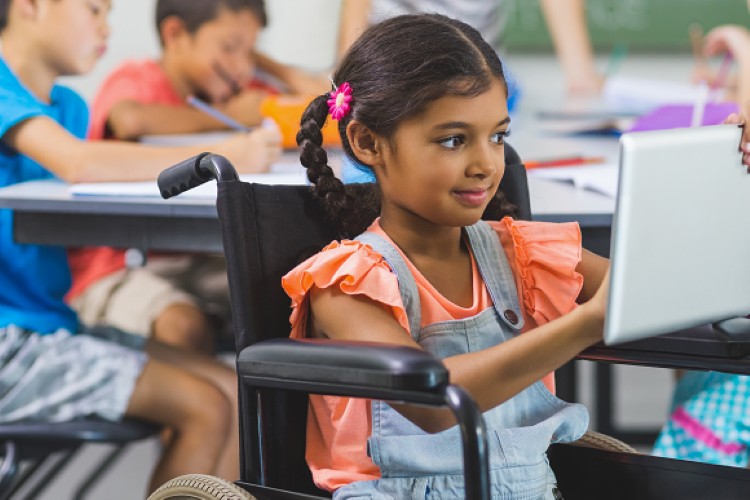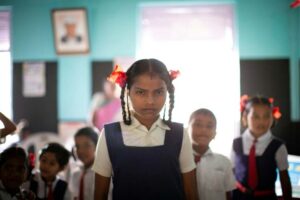
A recent shopping experience at a leading retail store in Haryana hit home a powerful realization. The store employs differently-abled persons, one of whom I had the opportunity to interact with while shopping. Not only was the sales representative assigned to me quick in responding to my request for a particular outfit, he went out of his way to suggest alternatives, and ensured that I had a satisfying shopping experience.
It struck me that given the right training, education and opportunities, the differently abled can also lead fulfilling and impactful lives. The experience underscores the importance of inclusive education — equitable education, irrespective of ethnic or social origin, language, gender, economic condition or ability.
READ I US tariff shock opens up opportunities for India
Inclusive education imperative
According to the United Nations Educational Scientific and Cultural Organisation,
inclusive education works to identify all barriers to education and remove them, covering everything from curricula to pedagogy and teaching.
The Convention on the Rights of Persons with Disabilities, an international UN treaty, defines children with disabilities as those having long-term physical, mental, intellectual or sensory impairments which, in interaction with various barriers, may hinder their full and effective participation in society on an equal basis.
The Government of India recognises 21 types of disabilities under the Rights of Persons with Disabilities Act, 2018, including physical disabilities such as visual, hearing, locomotor impairments and mental disabilities. These impairments not only affect routine activities such as seeing, speaking and hearing but also have far-reaching implications on the scope of educational and social opportunities.

They often hinder the development of self-worth and, in many cases, limit cognitive growth—because individuals may hesitate to ask questions or seek clarifications out of fear of being ridiculed. This hesitation can erode confidence over time, leading to diminished self-esteem and restricted access to meaningful employment. If not addressed appropriately and in time, these barriers can result in social isolation, loneliness and even depression.
However, the remedy goes beyond early identification and medical intervention. The role of inclusive education is crucial in mitigating the adverse effects of such impairments.
With the right systems in place, such education can significantly improve quality of life for both children and adults, empowering them to lead more inclusive and fulfilling lives.
Holding them back
The catch is, inclusive education has itself been riddled with biases and disparities. To begin with, students with disabilities are underrepresented and barely visible in mainstream educational institutions.
According to the latest Unified District Information System for Education Plus report, such students make up only 0.56 percent of the total, as against the required quota of 3 percent. Such glaring underrepresentation highlights systemic barriers that prevent equitable access to education for children with disabilities.
Besides, even among those who make it, there are biases. Take gender, for instance. The report suggests that more than half (61 percent) of children with special needs enrolled in schools in India are boys, and only 39 percent are girls. This stark gender disparity indicates that a significant proportion of girls with disabilities are excluded from entering the schooling system, let alone benefiting from inclusive education.
While data from the report is damning, the scope of the report reflects a narrow understanding of inclusion. This is because the numbers focus primarily on issues such as availability of functional toilets and ramps with handrails. Though important indicators, they are relevant only to children with locomotor disabilities, that is, those who are unable to move themselves or objects from one place to the other.
This limited lens overlooks the needs of students with visual, hearing, intellectual or psychosocial impairments such as anxiety, depression, autism and obsessive-compulsive disorder. Such disabilities hinder concentration and focus, and limit the ability to build peer relationships and manage emotional regulation. For such children, accessibility means much more than physical infrastructure.
The report also fails to mention any progress or policy measures critical to ensure that such students can participate meaningfully in regular classroom settings. One such aspect is teacher training. The report does not mention structured training programs to equip educators with inclusive pedagogical methods or teaching strategies.
The document also overlooks the availability or deployment of accessible tools such as Braille, large print screen readers, tactile graphics, audio-enhanced materials and support systems which are vital for learners with sensory impairments.
There is no information on sign language interpreters or augmentative communication tools (communication tools other than talking) both necessary for students with hearing and speech impairments.
The report also does not reference the use of individual education plans, developed to ensure that children with disabilities receive special instructions and services at school. Such plans are customised to individual needs, developed by the school and the family, and are crucial for tailoring education for students with cognitive and sensory disabilities.
The key here is teamwork: inclusive education requires special educators, speech therapists, occupational therapists, mobility specialists and engaged family members. The involvement of each is necessary for children’s holistic development.
Yet, these parameters are not incorporated in the monitoring framework of the report. By not capturing these aspects, the report inadvertently undermines the complexity and urgency of the challenge at hand, and thereby presents a reductionist view of accessibility.
Without a broader and more inclusive monitoring framework, critical gaps will continue to be overlooked, especially for the most marginalised learners.
Social inclusion
True inclusion goes beyond ramps and restrooms. It requires systemic change in curriculum design, teacher preparation, pedagogy and school culture. One possible model is the Finnish school system, that exemplifies inclusive education, emphasising equity in learning for all students.
Schools in Finland integrate children with and without impairments or learning difficulties into regular classrooms. Educators address specific requirements by developing customised learning plans, employing specialised resources and collaborating closely with special education experts to successfully serve each student.
Research into this model has found that even as integration of children with special needs in regular classrooms is a noble objective, there is need for improvement in several areas to truly realise the cause. For instance, researchers recommend measures such as training teachers adequately and enhancing resources so more schools can accommodate children with special needs.
Closer home too, there are several examples. Earlier this year, the Haryana government started a sports facility for children with special needs. The space is especially targeting the huge numbers of differently-abled athletes from the state’s villages.
In yet another instance, as part of a pilot project in Rajasthan, children with visual impairment were trained to use computers autonomously. The training began by encouraging them to independently read digital books, familiarising them with the QWERTY keyboard, screen reading software and installing MS Office, among other activities. At the end of the program, students were given laptops with screen reading softwares, headphones and data cards.
Such initiatives highlight the importance of creating spaces in schools, and outside of them, where children —regardless of ability—feel seen, supported and empowered to dream freely and reach their fullest potential.
Until that is done, inclusive education will remain an elusive hope.
Jaskiran Arora is Dean, Education Quality, and Head, Centre of Teaching, Learning and Development, BML Munjal University. Originally published under Creative Commons by 360info .
.
